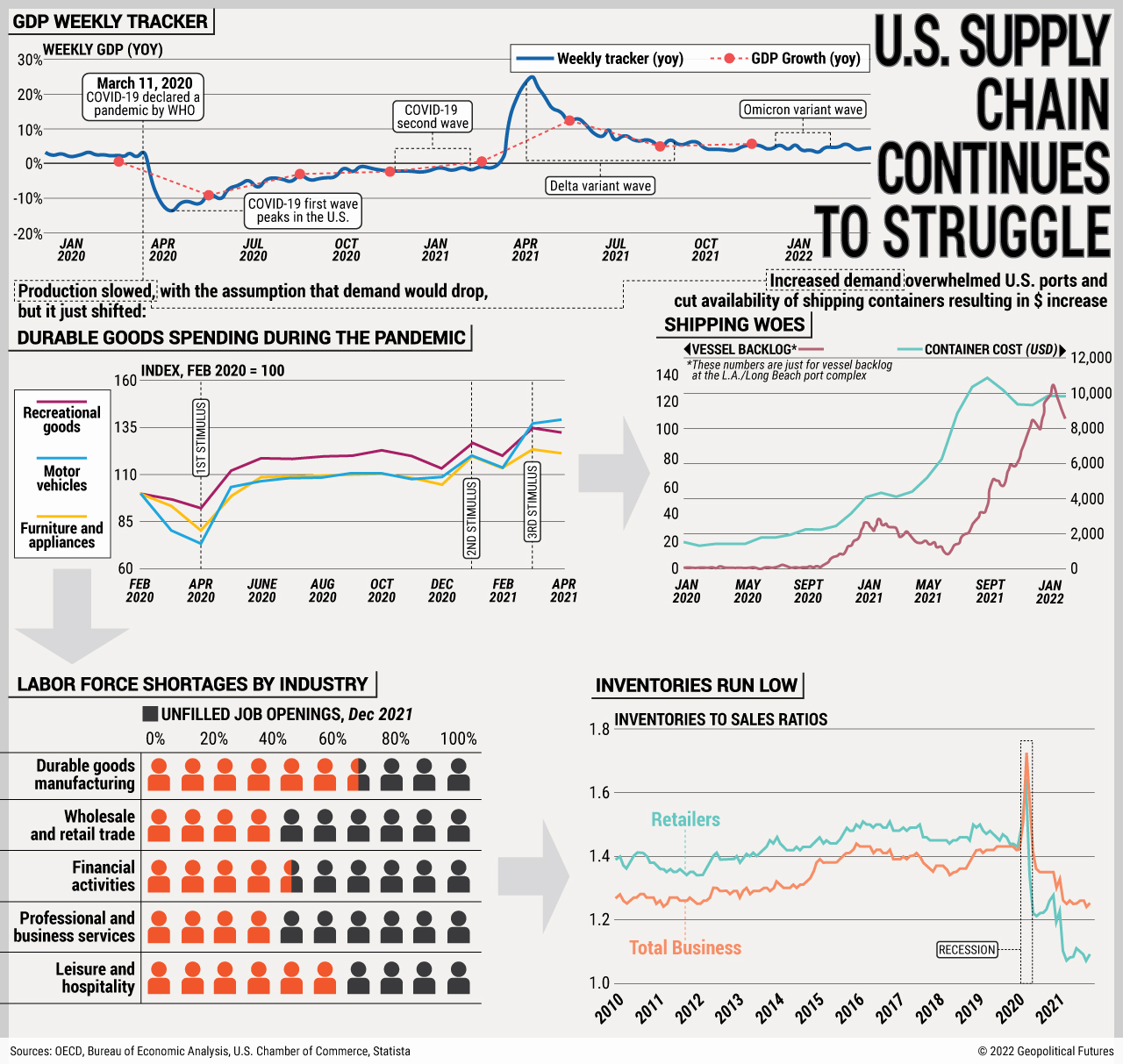More than two years after the world first learned of COVID-19, U.S. (and other) supply chains are still experiencing severe problems. Prolonged public health interventions, repeatedly loosened and then tightened with each subsequent variant of the virus, disrupted the movement of finished goods and raw materials, seriously hampering manufacturing. With production slowing significantly, many experts expected demand would also decline. Instead, demand for services shifted toward durable goods like motor vehicles, recreational equipment and furniture. This overwhelmed U.S. ports and strained the availability of shipping containers, driving up freight rates.
Shifting demand patterns also stretched the labor market to its limits. Lingering fears about the virus, inflation and heightened economic uncertainty, a bump in early retirements, disruptions to family life, frustration and fatigue among many in the hospitality sector, and myriad other factors combined to slow the economic recovery.







 Special Collection – The Middle East
Special Collection – The Middle East